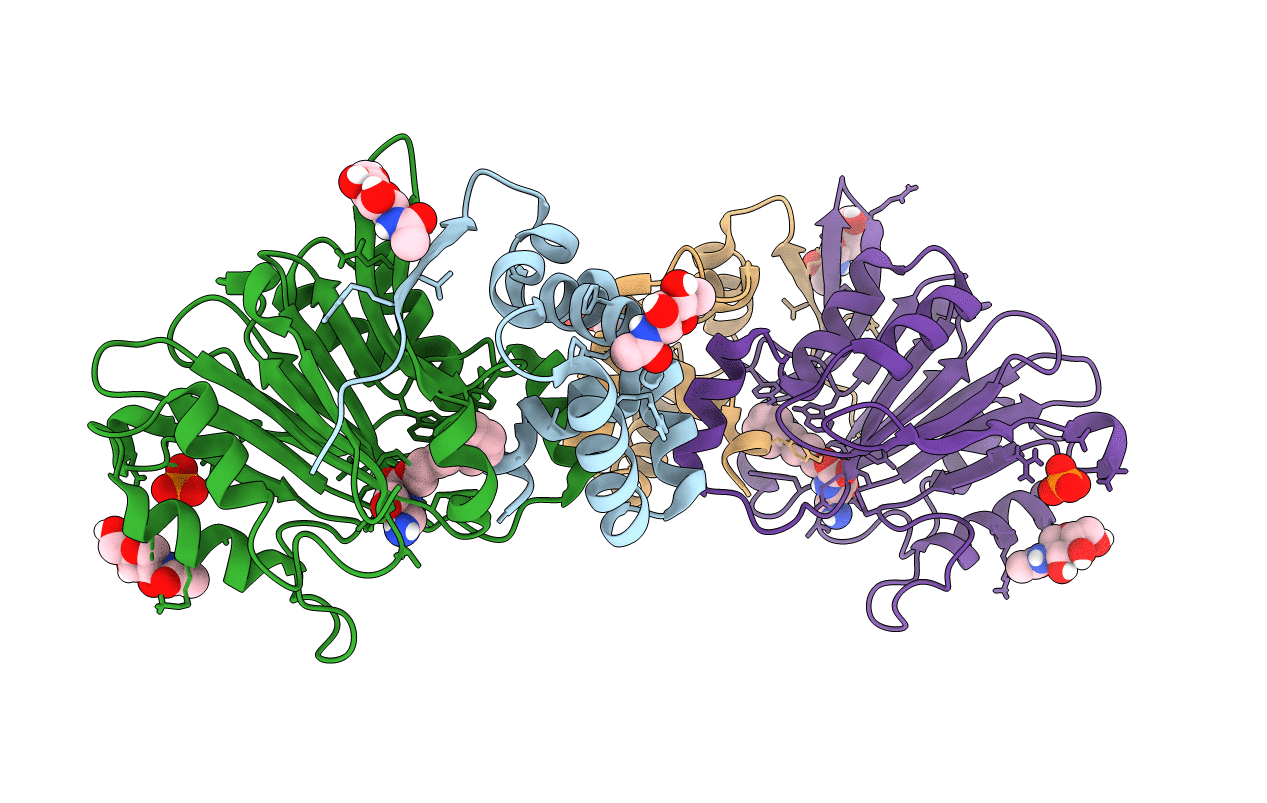
Deposition Date
2018-07-01
Release Date
2018-09-26
Last Version Date
2024-10-23
Entry Detail
PDB ID:
6DY2
Keywords:
Title:
Guinea pig N-acylethanolamine-hydrolyzing acid amidase (NAAA) covalently bound to beta-lactam inhibitor ARN726
Biological Source:
Source Organism:
Cavia porcellus (Taxon ID: 10141)
Host Organism:
Method Details:
Experimental Method:
Resolution:
2.71 Å
R-Value Free:
0.23
R-Value Work:
0.18
R-Value Observed:
0.18
Space Group:
P 21 21 2


